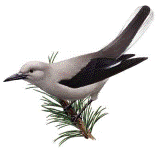Papers in the Biological Sciences
Document Type
Article
Date of this Version
1984
Abstract
Blue jays (Cyanocitta cristata) responded to projected black-and-white silhouettes of cherry leaves that were either undamaged or were damaged by either cryptic caterpillars that disguise leaf damage due to their feeding or by noncryptic caterpillars that do not disguise leaf damage due to their feeding. Pecks to the key on which the images were projected were reinforced only if interresponse times fell within specified temporal boundaries. These boundaries were different in the presence of the two types of leaf damage. Following training with one exemplar of each damage type, the jays correctly categorized novel instances of both types. They categorized novel undamaged leaves as if they were examples of leaves showing damage by cryptic caterpillars. Results suggest that the jays can readily discriminate and generalize to new members of a polymorphous stimulus class. The results suggest that techniques for the study of concept formation in animals can be applied to an animal’s ability to categorize stimuli that are involved in a potential prey-predator relationship.



Comments
Published in Animal Learning & Behavior 12 {2), 202-208 (1984). Copyright 1984 Psychonomic Society, Inc. Used by permission.